by Julia López-Robertson, Amber Hartman, Jennifer Judy, Lillian Reeves, University of South Carolina

Continue reading

by Julia López-Robertson, Amber Hartman, Jennifer Judy, Lillian Reeves, University of South Carolina

Continue reading

by Julia López-Robertson with Amanda Dunnigan & Rebecca Martin
University of South Carolina
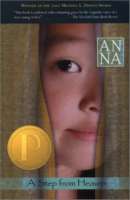 In A Step from Heaven, An Na invites us on the Parks’ journey as a recently arrived Korean family who migrated to the United States (Mi Gook) seeking a better life. Young Ju, our seven year old protagonist, believes that Mi Gook is heaven, but is it? The family’s new life in the United States is full of contradiction and chaos; they desire to belong and fit in while still maintaining their Korean heritage, is this possible? As we continue to serve more immigrant children in our schools, how can we help them cross borders between life inside the home vs. life outside in the world?
In A Step from Heaven, An Na invites us on the Parks’ journey as a recently arrived Korean family who migrated to the United States (Mi Gook) seeking a better life. Young Ju, our seven year old protagonist, believes that Mi Gook is heaven, but is it? The family’s new life in the United States is full of contradiction and chaos; they desire to belong and fit in while still maintaining their Korean heritage, is this possible? As we continue to serve more immigrant children in our schools, how can we help them cross borders between life inside the home vs. life outside in the world?
Continue reading

by Julia López-Robertson, Michelle Metts and Tracy Spires, University of South Carolina
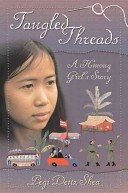 Immigrant students face significant challenges in balancing their home culture and American culture. In Tangled Threads: A Hmong Girl’s Story (Shea, 2003), Heather and Lisa assimilated to the American culture and brought heartache and disappointment to their parents and grandmother. Many parents display tremendous bravery in bringing their families to America, only to lose their children to American culture (Buley-Meissner, 2002). ESOL (English to Speakers of Other Languages) teachers can assist students in embracing their home culture. Continue reading
Immigrant students face significant challenges in balancing their home culture and American culture. In Tangled Threads: A Hmong Girl’s Story (Shea, 2003), Heather and Lisa assimilated to the American culture and brought heartache and disappointment to their parents and grandmother. Many parents display tremendous bravery in bringing their families to America, only to lose their children to American culture (Buley-Meissner, 2002). ESOL (English to Speakers of Other Languages) teachers can assist students in embracing their home culture. Continue reading

by Julia López-Robertson & Lillian Reeves, University of South Carolina
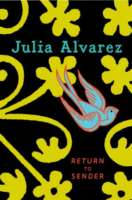 Emergent bilinguals make up 8.2% of the total population of all children under the age of 18 in South Carolina. While there are many languages spoken by immigrant children in our schools, Spanish is the most widespread language spoken by 40,000 of all emergent bilinguals (http://www.migrationinformation.org/ellinfo/FactSheet_ELL3.pdf). The Latino population has been on a steady increase nationally and in South Carolina specifically the population growth has been staggering; as reported by the American Community Survey, the change in the Latino population in the state of South Carolina in the period between 2000-2009 was 115.5%; in 2000 the Latino population was 94,652 and in 2009 it was 203, 939
Emergent bilinguals make up 8.2% of the total population of all children under the age of 18 in South Carolina. While there are many languages spoken by immigrant children in our schools, Spanish is the most widespread language spoken by 40,000 of all emergent bilinguals (http://www.migrationinformation.org/ellinfo/FactSheet_ELL3.pdf). The Latino population has been on a steady increase nationally and in South Carolina specifically the population growth has been staggering; as reported by the American Community Survey, the change in the Latino population in the state of South Carolina in the period between 2000-2009 was 115.5%; in 2000 the Latino population was 94,652 and in 2009 it was 203, 939
(http://pewhispanic.org/files/factsheets/hispanics2009/Table%2014.pdf). Yet, when I arrived at the University of South Carolina in 2006, I taught the first course that had anything to do with teaching emergent bilinguals (while the state of South Carolina uses the term English Language Learner to describe children who will learn English as an additional language, I prefer emergent bilinguals (see García & Kleifgen, 2010).
Continue reading

Kathy G. Short, University of Arizona
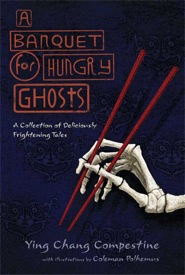
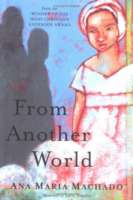
An exploration of strategies for pairing and reading books alongside each other was at the heart of my teaching in a recent global literature course. Once I realized the power of reading books within the context of other books, I brainstormed pairings that could be productive to explore and made stacks of books that I sorted and resorted to find different points of connections. I was intrigued by how my understandings of a book shifted when that book was juxtaposed with different books. The significance of perspective quickly became clear—the most interesting pairings were ones where the two books offered distinctly different perspectives on a particular event, culture, theme, or issue. The two books needed to challenge each other in some way, not simply be connected by a surface-level topic.
Continue reading

Kathy G. Short, University of Arizona
Several years ago, Amy Edwards and I worked with her fifth graders in literature circles around a set of novels set in China. Her students had been reading and discussing global literature for several years, and so she didn’t hesitate in beginning the school year with these novels as a way to build off interest in the Beijing Olympics. The problem was that the novels were historical fiction, many set during the time of the Cultural Revolution, and it quickly became apparent that the students were struggling because they did not have enough knowledge about that time period. More worrisome, because the novels were historical, students were forming misconceptions about modern China as a repressive country set back in time.
Continue reading

Kathy G. Short, University of Arizona
Critically reading books set in global cultures is difficult when you only have surface knowledge about those cultures. In a global literature class, we found that reading a book in the context of other books provided us with perspectives that facilitated more critical reading. One effective strategy was to read paired books that were from the same culture or had similar themes, but provided differing perspectives. These pairings often exposed problematic issues, such as the domination of western views or assumptions about race, class or gender. The books in each pair were selected to reflect opposing points of view and so we were able to read the books against and beside each other, which supported us in uncovering problematic issues. We learned how to read critically as we read globally.

by Kathy Short, University of Arizona, Tucson, AZ
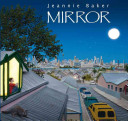 One of the lessons that I have learned as a reader of global literature is to never read a book by itself–to always read a book alongside other books. Over and over, I find that our interpretations and connections change dramatically when we read paired books or read a book within a larger text set or collection. Throughout the next month, my blogs will focus on my experiences of reading books alongside each other, most recently within a graduate course on global literature.
One of the lessons that I have learned as a reader of global literature is to never read a book by itself–to always read a book alongside other books. Over and over, I find that our interpretations and connections change dramatically when we read paired books or read a book within a larger text set or collection. Throughout the next month, my blogs will focus on my experiences of reading books alongside each other, most recently within a graduate course on global literature.
This blog focuses on an example of how our perspectives on a book can change dramatically when we read it within a broader collection. Mirror, written and illustrated by Jeannie Baker (2010), is an Australian picture book that is receiving enthusiastic reviews as visually stunning with a thoughtful message of global interdependence. As an individual piece of literature, this picture book is exemplary and deserving of awards and recognition as an aesthetic masterpiece. When considered within the political structures of our society and the broader collection of children’s books, however, the book is problematic and raises provocative questions about the responsibilities of authors, reviewers, and readers.
Continue reading

by Ann Parker, Pima Community College, Tucson, AZ
 As we have seen, all of these small book publishing companies are managing to survive in the midst of the large conglomerate companies that have lots of resources at their disposal to publish and market their books. All of these smaller companies specialize in publishing children’s books from outside the predominant cultural perspective in the US, including books highlighting African American, Asian American, Latino, Native American, and international communities. Generally, as is the case with Children’s Book Press, Just Us Books, and Lee and Low Books, these companies were originally founded to meet a need in the community, namely, the need for books that reflected the experiences of children from multiracial and multiethnic backgrounds, but that were so well written that all children could enjoy them.
As we have seen, all of these small book publishing companies are managing to survive in the midst of the large conglomerate companies that have lots of resources at their disposal to publish and market their books. All of these smaller companies specialize in publishing children’s books from outside the predominant cultural perspective in the US, including books highlighting African American, Asian American, Latino, Native American, and international communities. Generally, as is the case with Children’s Book Press, Just Us Books, and Lee and Low Books, these companies were originally founded to meet a need in the community, namely, the need for books that reflected the experiences of children from multiracial and multiethnic backgrounds, but that were so well written that all children could enjoy them.
Continue reading

by Ann Parker, Pima Community College, Tucson, AZ
 Last week, we published an interview with Dana Goldberg of Children’s Book Press. He shared his beliefs and strategies for operating a successful small, independent press publishing multicultural and bilingual literature for children. This week, we present an interview with Wade Hudson, Publisher and CEO of Just Us Books.
Last week, we published an interview with Dana Goldberg of Children’s Book Press. He shared his beliefs and strategies for operating a successful small, independent press publishing multicultural and bilingual literature for children. This week, we present an interview with Wade Hudson, Publisher and CEO of Just Us Books.
Continue reading